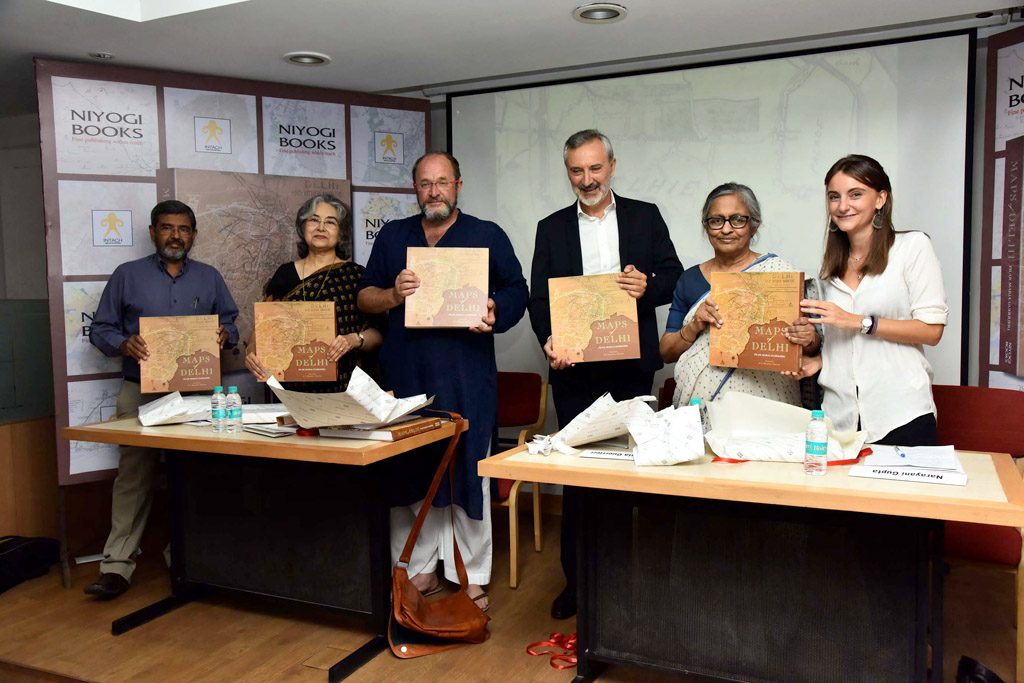Op-Ed
PHD Research that Blosommed into First Organised Collection of Delhi’s Maps

Saket Suman | IANS
A scholar set off from her native Milan to research on Delhi’s pre and post-Independence architecture and planning (1912-1962) for her doctoral thesis. The upshot? Arugably the first book that provides a comprehensive and engaging overview of mapping in the national capital from the 19th century all the way up to the Master Plan for 2021.
“Maps of Delhi” (Niyogi Books/Rs 4,500/392 pages), it is authored by Pilar Maria Guerrieri, who has conducted extensive research into European and Indian cultures, the development of megacities, and the effects of cultural exchanges, with a primary focus on pre- and post-Independence Delhi.
On arriving here, she soon came to realise that there was much confusion on the subject in academia and elsewhere and thus began looking for primary sosurces to fill this gap.

“While I was searching specifically for the pre and post independence maps in several Indian archives and institutions, I slowly found and collected all the other documents. At the end of my PhD I realised that if I had the complete collection of maps at the beginning of my studies, my research would have been much more easier and smoother. I decided to publish the whole collection with the aim that it will turn to be useful for scholars interested in understanding the capital of India,” Guerrieri told IANS in an interview.
Visually stunning and equally informative, it is the first organised collection of Delhi’s maps, containing a chronology of magnificent ancient and modern hand-drawings as well as digital maps of the city.
“The process of finding the maps has been an incredible life experience. Took a very long time to collect, select and put in order all the maps scattered in several Indian archives. Dealing with chaotic and diverse archives, handle bureaucracy, time spent getting the right information and patience used to keep going, have been the main challenges of the research process,” recalled Guerrieri, who holds a PhD in Architectural Design, Architectural Composition, Criticism and Theory.
The degree has been awarded by Politecnico di Milano in association with the Indian National Trust for Art and Cultural Heritage (Intach) in Delhi and London’s Westminster University.

Guerrieri said that after getting access to archives, she sat there for months, patiently hunting for maps and documents that could unveiling the story of the capital. The National Archives of India, the Delhi State Archives and many others institutions, the author said, hold incredible treasures whose true value needs to be appreciated.
The author further shared that the book unveils the development of the capital, showing the most important changes in its urban planning over two hundreds years.
“I believe it is an interesting book for both academics and non-academics. For the first ones, given the amount of valuable primary sources information, is an important detailed specific reference point. Instead, for the second ones, I believe the book provides a fascinating sense of growth and expanse of the city, kick starting the curiosity of exploring hidden historical treasures,” maintained the author.
The book was jointly launched here by heritage activist Narayani Gupta; historian and author, William Dalrymple and cartographer Manasi Lahiri on Thursday evening at the Intach multipurpose hall here. The author again emphasised that maps are not only important for planning entry and exit strategies from a place but also for understanding and analysing the changes over time.
Referring to the capital as “City of Cities,” the author added that Delhi is a city of distinct parts — each with its distinct characters and features — so distinct that we are actually able to identify those parts as micro cities within the city.
The author also pointed out that the latest maps of Delhi make it clear that the city continues to grow non-stop. Unfortunately some major problems — pollution and environmental degradation — also grow hand-in hand with the city, she lamented.
Guerrieri, who has been dividing her time between Milan, London and Delhi for the past six years, is now an Associate Professor at the Italian-Indian GD Goenka University branch here of the Politecnico di Milano.
She is also part of Unesco’s “Creative Small Settlements – Culture-Based Solutions for Local Sustainable Development” international project for conservation and regeneration of minor settlements. She has also been nominated as an International Advisory Council Member of the Indian Trust for Rural Heritage and Development (ITRHD), which is specifically responsible for development of villages in India.
(Saket Suman can be contacted at saket.s@ians.in)

